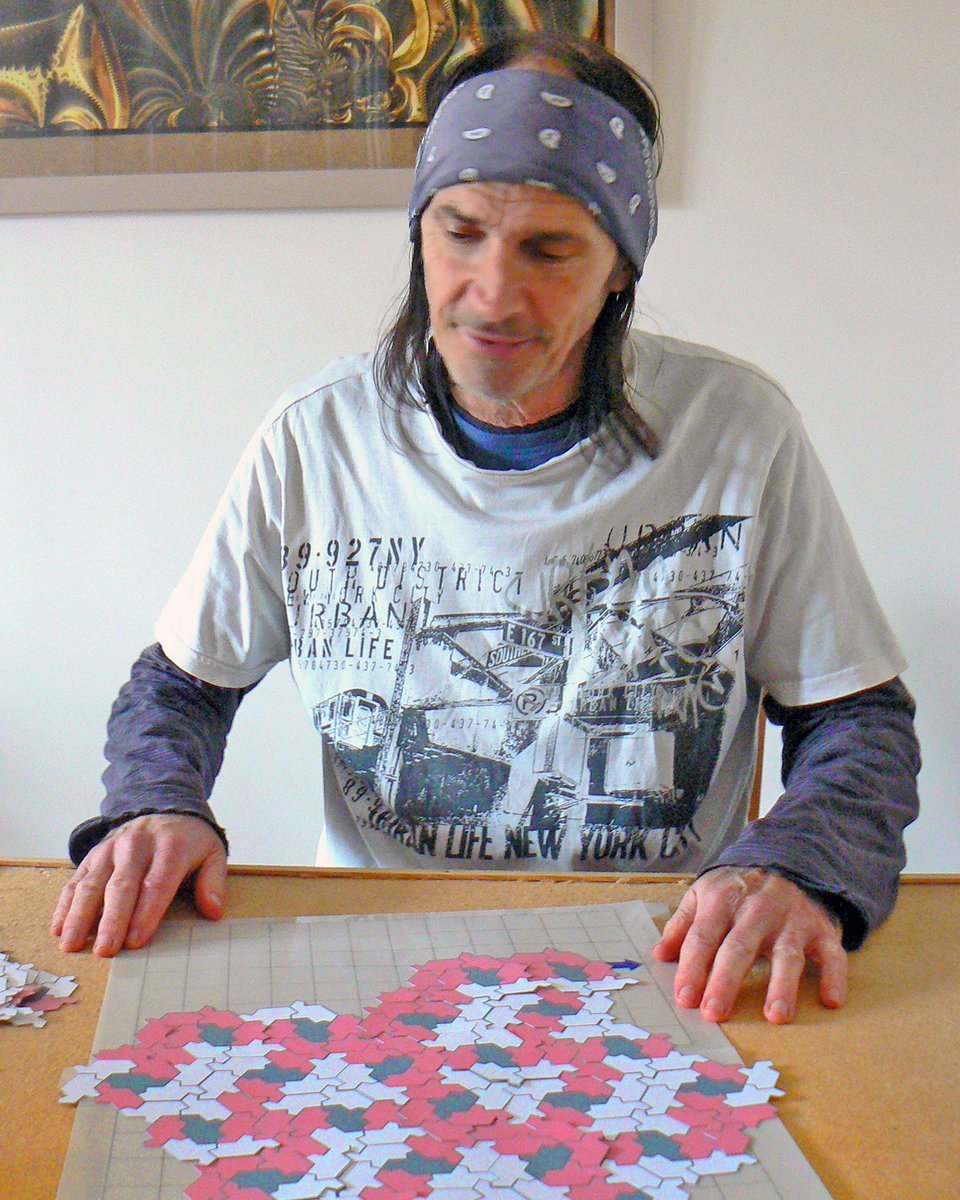So you're not an expert...
/As you well know, my belief is that everyone is creative: All humans create, because we’re humans. Many of us, however, are afraid to create because we’re not “good at it,” which is another way of saying we have not been professionally trained or haven’t developed the skills that would allow us to think of ourselves as “artists.”
I myself am always hesitant to describe myself as a ‘composer,’ since I’ve never had a composition class. I know that I blunder my way through every piece I’ve ever written or hope to write because I’ve never had the training that would allow me to do it without thinking.
I was delighted then to read this article about a long-sought mathematical unicorn, the Einstein tile. Delighted, not astonished — hold that thought.
You should go read the article, but I’ll summarize here.
The whole field of tiling is fascinating: How can you fill a plane — like a floor or a tabletop — with repeating shapes, and what shapes will work or not work? They all have to fit together with no gaps; rotating pieces and/or mixing shapes are allowed.
I imagine everyone knows the hexagonal tiles we see in bathrooms and subways (or beehives):
That’s a simple illustration of the concept. Hexagons work. Squares work. Pentagons don’t.
Hexagons and squares fill the plane periodically, i.e., they lie in patterns that repeat. Mathematicians, being the squirrelly creatures they are, have always sought tiles that will fill the plane without repeating patterns, aperiodically.
Of course they’ve found tons of combinations of shapes that work, but the one that eluded them was exactly that: one shape that could fill a plane aperiodically.
Until now.
And was it a mathematician at MIT or University of Chicago or wherever the cool kid math-heads hang out who discovered this marvel?
No, it was this guy.
You already know this if you read the article, but meet David Smith, a retired print technician in Yorkshire. An amateur. An enthusiast.
An artist.
(Sidenote: I was delighted to see his photo, because how cool is he? I’d invite him to camp with 3 Old Men for real.)
And his discovery?
So simple, and yet the professionals never saw it. (For all the details, read the article.)
I said up top that I was delighted, not astonished, to read about this amateur’s discovery, because until the late 18th-century most of our scientific discoveries were made by amateurs. Benjamin Franklin, for example, was one of many intelligent men and women who were exploring electricity at the time, just as the concept of a “scientist” was beginning to take hold in European thought. (You will recall that Franklin’s pen pal, our own Georg Christoph Lichtenberg, was the world’s very first professor of physics, at Göttingen.)
Am I a composer? Sure am. I’m not John Williams or Igor Stravinsky, and I’m certainly not Wolfgang Mozart or Johann Sebastian Bach — but I compose. That makes me a composer. I don’t have to be a professional to claim the title.
Are you an artist?





